Weird Things Culture Researcher Matt Finaly takes a weekly look into the social, political and cultural climates of a populace at the time it was affected by a legendary paranormal, extraterrestrial or cryptid phenomenon. It appears on Tuesdays…
In 1837, something dark and quick began hunting women on the streets of London, pouncing upon them from the shadows and going to work on their clothes with razor talons and flaming breath, only to disappear seconds later, leaping silently over impossibly high hedges and rooftops, 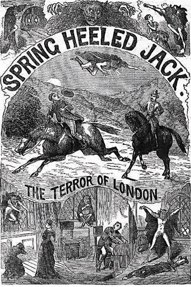 leaving behind only the shrill, hollow ghost of maniacal laughter and, of course, a panicked victim.
leaving behind only the shrill, hollow ghost of maniacal laughter and, of course, a panicked victim.
Descriptions of Spring Heeled Jack varied over the 65 years that he laid siege to London’s gas lit back alleys and dark urban bowers, but early witnesses (somewhat) consistently agree that he sported large pointed ears, an equally pointy nose, bulging eyes, sharp claws, the ability to breathe fire and a penchant for agile escapes via inhumanly powerful jumps (hence his media-coined moniker).
John Thomas Haines’ 1840 play, Spring-Heeled Jack, the Terror of London, marked the first official appearance of Jack in a popular entertainment (he had already become a staple of various Punch and Judy street puppet shows), which was followed by a rash of both sightings and corresponding sensationalized fictionalizations throughout the 1840s and ‘50s. In the name of both topicality and word economy, however, we aim to focus on the years prior to Jack’s assimilation into the everyday pop cultural dialogue of Victorian England.
Accepting, as many experts do, that the initial attacks between 1837 and 1838 were perpetrated by a still-anonymous (though one Henry de La Poer Beresford, dubbed “The Mad Marquess,” is a prime suspect) malicious, costumed prankster, and noting that the perpetrator’s image and misdeeds became the stuff of pop culture legend, the question must be posed: What overriding cultural factors contributed the specific physical attributes that the misogynistic hoaxer built into his monster? In short, why was a quick-footed, fire-breathing demon the obvious avatar for blind dread and mass hysteria in 19th century London?
(more…)

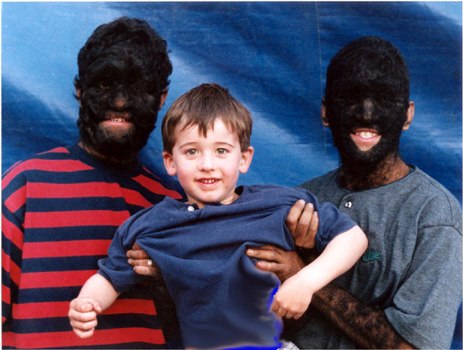


 mysteries of cryptozoology. While Nessie, the stalwart cover girl of lake monster commercialization, may be the most ubiquitous of these creatures, North America has its own heavy-weight lacusine cryptid, with an equally cloying nickname – Champ.
mysteries of cryptozoology. While Nessie, the stalwart cover girl of lake monster commercialization, may be the most ubiquitous of these creatures, North America has its own heavy-weight lacusine cryptid, with an equally cloying nickname – Champ.
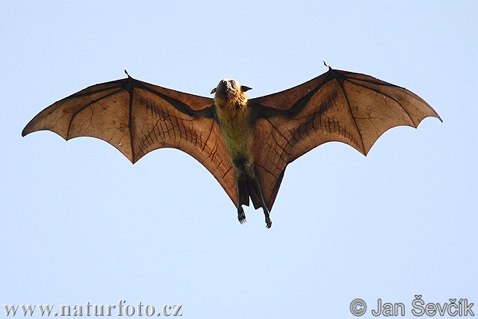
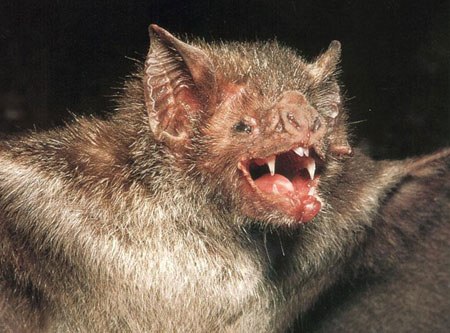


 Thank you to everyone (including Brett “Amtrekker” Rounsaville) who visited our Weird Things deliberation chamber today to hash out our first ever Weirdest Thing In The World competition. Arising victorious was the Dumbo Octopus, who captured our imaginations and stole our hearts with his Peep-like demeanor and what looks to be a tiny nubbin for a nose.
Thank you to everyone (including Brett “Amtrekker” Rounsaville) who visited our Weird Things deliberation chamber today to hash out our first ever Weirdest Thing In The World competition. Arising victorious was the Dumbo Octopus, who captured our imaginations and stole our hearts with his Peep-like demeanor and what looks to be a tiny nubbin for a nose.

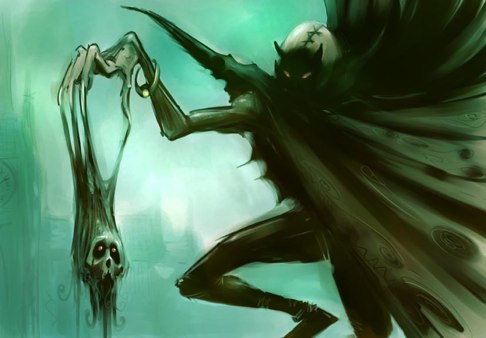
 leaving behind only the shrill, hollow ghost of maniacal laughter and, of course, a panicked victim.
leaving behind only the shrill, hollow ghost of maniacal laughter and, of course, a panicked victim.